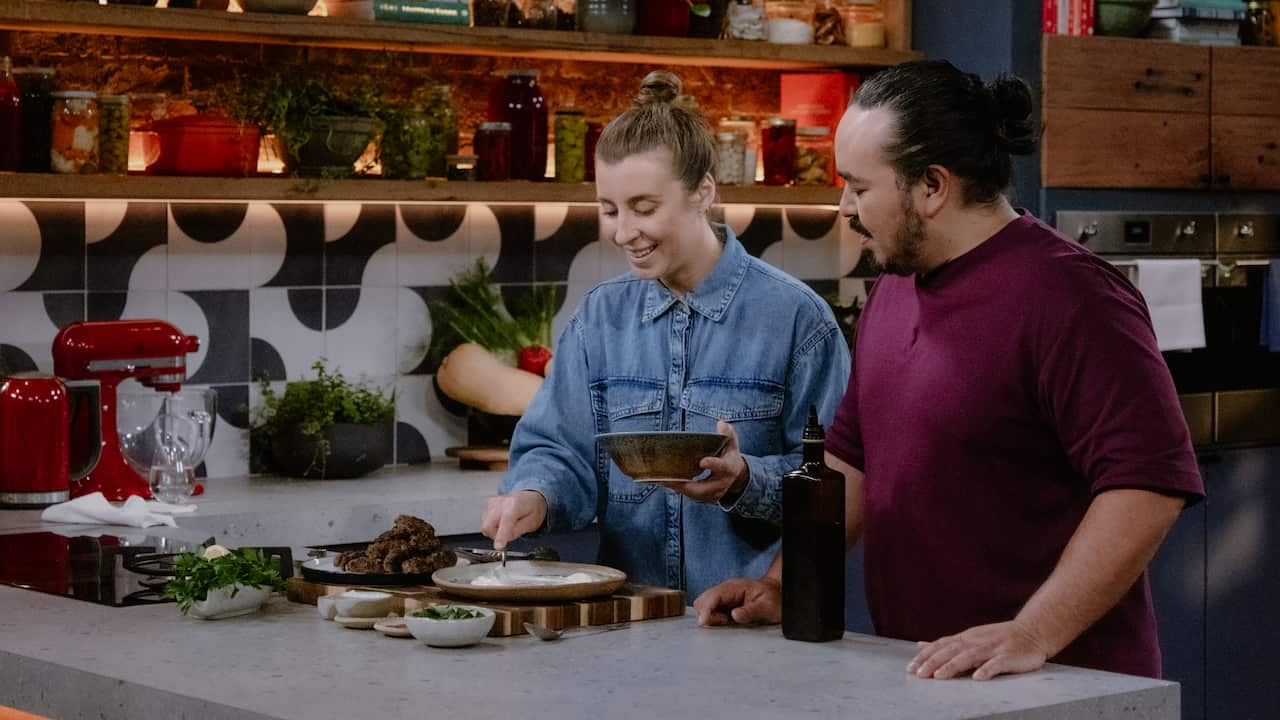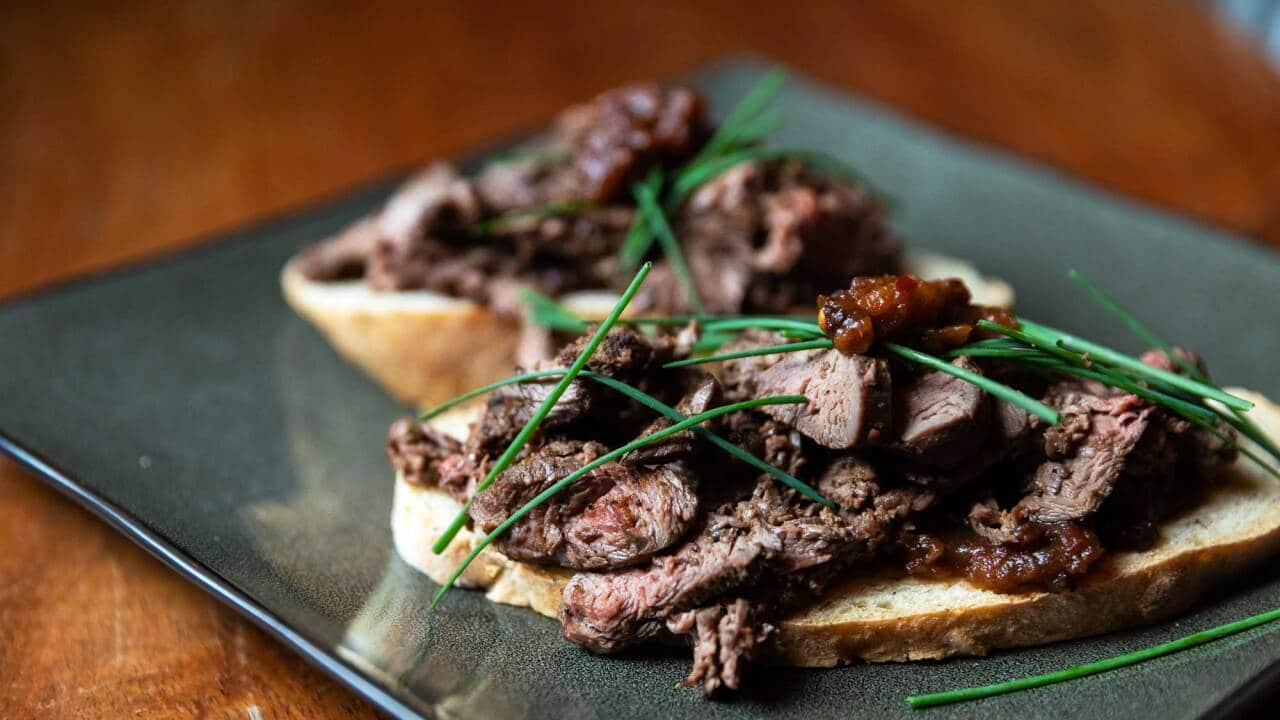Stream free On Demand

Sustainable Feast
episode • The Cook Up with Adam Liaw • cooking • 25m
G
episode • The Cook Up with Adam Liaw • cooking • 25m
G
We’ve heard it before: eat more plants, buy local, and choose what’s in season. These are the golden rules of a greener kitchen. But there’s so much more we can do; small, simple changes that are not only good for the planet, but good for our bodies too.
Swap farmed meat for wild game
If you’re a meat-eater, consider replacing some of the farmed meat on your plate with wild game. Chef and sustainability advocate Jo Barrett is doing just that at , her new venture celebrating lesser-used meats like wallaby and wild boar.
“These animals are roaming free and feed themselves. They're free-range and wild. And they're also delicious and often a lot leaner, so they're a healthier meat,” she explains. “In other countries, wild game is seen as a delicacy. But for some reason, here in Australia, we have this backward stigma about it.”

Jo Barrett making venison kofta on The Cook Up With Adam Liaw
Barrett shares her recipe for on an episode of , which is dedicated to sustainability.
With only a small percentage of kangaroos being culled in Australia ending up on our plates, eating the meat is a simple way to reduce waste. “By eating them, you become a part of the solution,” says Barrett.
Pick and store your produce like a pro
Every week, . That’s where produce expert Thanh Truong, known as the , steps in.
“When it looks ‘alive’, there’s an abundance of it, and it's good value, generally speaking, it will eat good. It may or may not be in season. Use your senses, feel the produce with your hands to see if it is soft or firm, smell it to see if the herbs have lots of volatiles and aromas, or if the mango is firm and smelling great,” he says.
“A bad fruit or veg experience could mean the produce not being fully eaten and thrown in the bin, it also drives us further away from eating healthy and tasty whole foods.”
Storing food properly can dramatically extend its life. Truong gives the example of potatoes, which need a dark, cool, and slightly humid home, like a box or brown paper bag in your pantry. Onions and garlic also like the dark, but keep them in an open basket and away from potatoes, which release gases that cause spoilage.
And those pears on your counter? Give them time. “Packham pears can take up to 10 days to soften,” Truong notes. And and the same goes for all fruit.
Eat a wider variety of plants
The planet has gifted us over 200,000 edible plants, yet we.
“If we eat a bit of everything, it means that farmers from all industries can thrive, from broad acre farmers to aquaculture, to horticulture and local growers,” says Truong.
Health is becoming more prevalent in our sustainability discussions.Jo Barrett
Be selective with seafood
for its environmental impact. If you want to keep eating fish sustainably, tools like the can help. It categorises seafood into “better choice,” “eat less,” and “say no.”
Barrett recommends smaller species like mackerel or herring, which are packed with omega-3s.
“A snapper might take three or four years to get to the size that you're eating it at. Whereas some of these other fish, even freshwater species like trout, they might just take six months to get to table size,” she explains.

Damon Gameau makes sea urchin spring rolls on The Cook Up Credit: Jiwon Kim
On The Cook Up, he turns the creamy roe into a show-stopping spring roll.
Grow your own food… or at least your herbs
Maintaining a garden might not be for everybody, but growing herbs is easy. Urban gardener and author . Mint, chives and rosemary are also accessible for beginner gardeners.

Having your own Indigenous bushfood garden at home can benefit your cooking, wellbeing, and local biodiversity. Credit: Christian Hampson
Sustainability doesn’t have to be all or nothing. Whether it’s swapping one ingredient, learning to store your veggies better, or planting a pot of mint on your windowsill, every small step adds up to something bigger.







